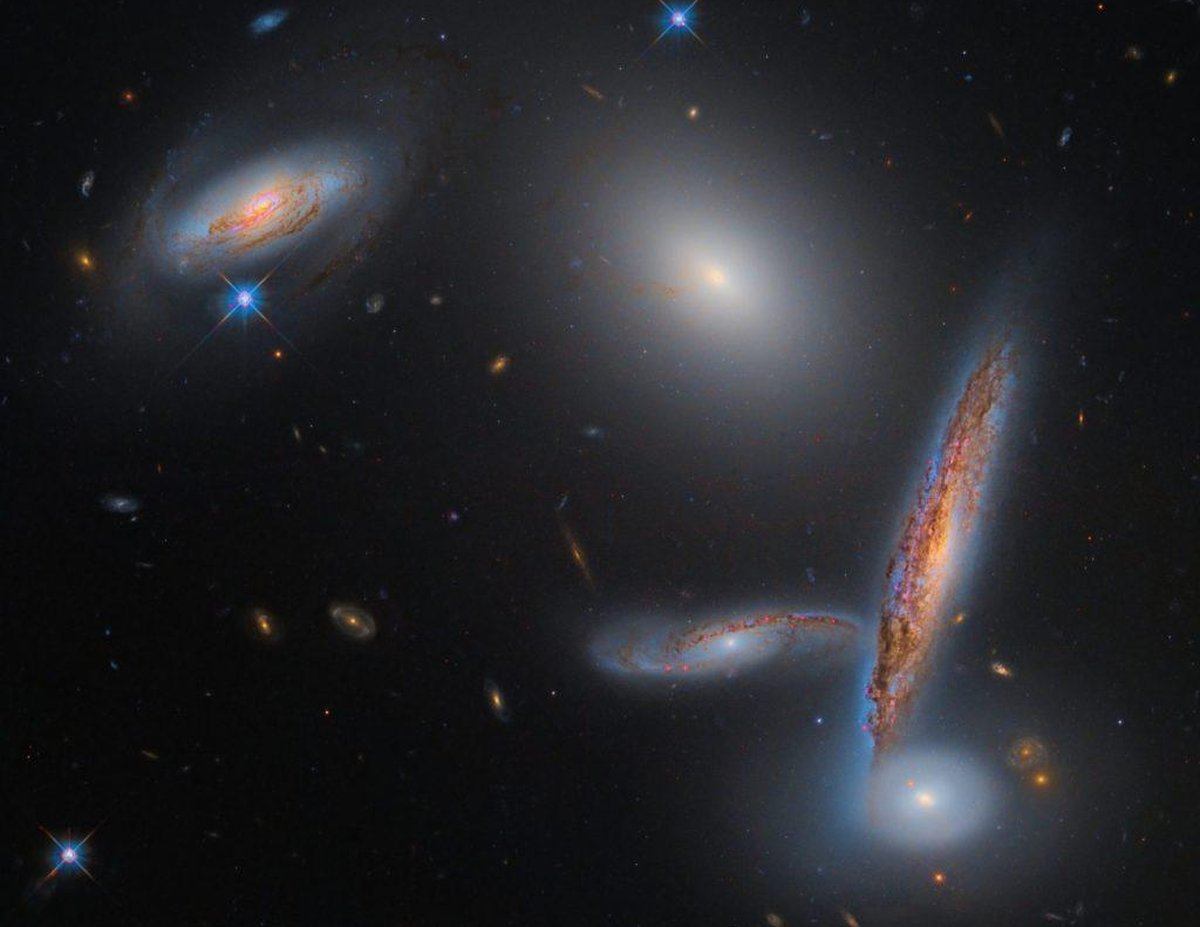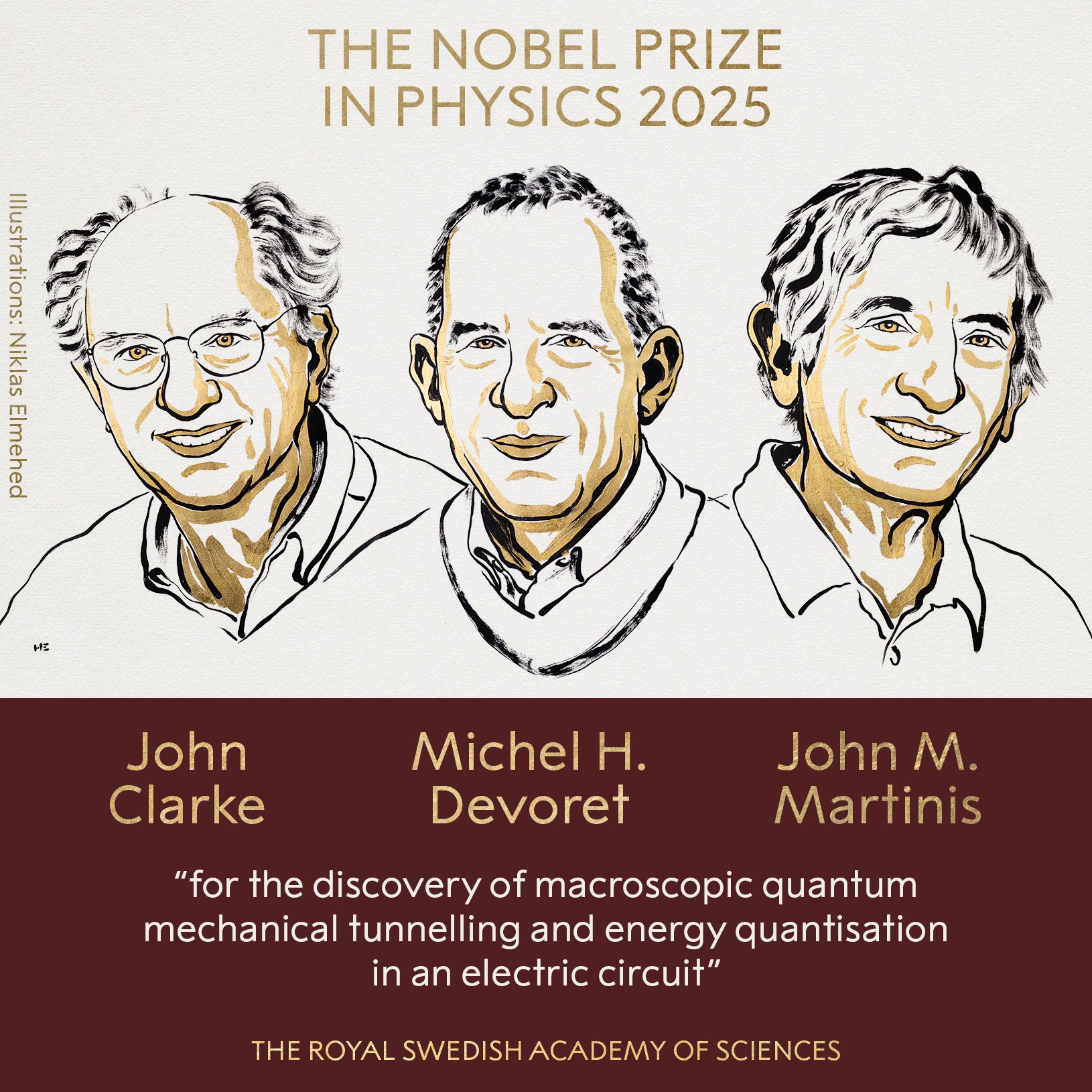Every week, TecMundo and #AstroMiniBR curate a selection of the best astronomical curiosities produced by X-profile contributors to share a little more of our fantastic universe with you. Check it out below!
#1: A compact group of galaxies!
The Hickson 40 galaxy group is one of the most interesting and compact galaxy formations in the nearby universe. Consisting of five galaxies, three spirals and two ellipticals, this group is notable for its density and apparent closeness. The galaxies are so close together that they appear almost overlapping when viewed through telescopes.
This group is located about 300 million light-years from Earth in the constellation Hydra and is one of 100 galaxy groups identified by Canadian astronomer Paul Hickson in the 1980s. The work of Hickson 40 provides important insights into the dynamics of galaxies in dense environments, where intense gravitational interactions cause visible distortions in their shapes..
Furthermore, interactions between galaxies can result in the formation of new stars due to the compressed gas and dust, and eventually lead to the galaxies merging to form a single larger galaxy.
The Hickson 40 group allows astronomers to investigate the processes of galaxy formation and evolution on a relatively small scale. It offers a microcosm laboratory for uncovering the forces that shape the universe on large scales..
#2: Why are there seasons on Earth?
Seasons on Earth A phenomenon resulting from the inclination of the planet’s axis of rotation relative to the plane of its orbit around the Sun.The Earth is tilted about 23.5 degrees, which means that different parts of the planet receive different amounts of direct sunlight throughout the year.
During orbital motion, this tilt causes either the Northern Hemisphere or the Southern Hemisphere to be more directly exposed to the sun’s rays at different times of the year, causing seasonal changes.
When the Northern Hemisphere is tilted toward the Sun, it experiences summer with longer days and higher temperatures, while the Southern Hemisphere experiences winter with shorter days and lower temperatures, and vice versa.
In addition to axial tilt, the elliptical shape of the Earth’s orbit also contributes to seasonal variations, although to a lesser extent. The Earth is not always the same distance from the Sun, but this difference is relatively small and is not the main cause of seasons..
During the solstices, one hemisphere receives the maximum or minimum amount of sunlight, marking the longest and shortest days of the year. At the equinoxes, both hemispheres receive approximately equal amounts of sunlight, resulting in equal lengths of days and nights, signaling the transitions between seasons.
#3: Generating a photon inside the Sun!
The light that illuminates our planet It comes from photons produced by the nuclear fusion process inside the Sun.: Hydrogen nuclei combine to form helium, releasing a huge amount of energy. This process takes place in the solar core, where the temperature and pressure are extremely high, allowing fusion reactions to occur.
When protons combine, energy is released in the form of high-energy photons known as gamma rays, and these photons begin their long journey from the core to the Sun’s surface via a not-so-straightforward path.
The journey of photons to the Sun’s surface is a complex and time-consuming process, because the plasma density in the Sun’s inner layers is so high that photons are constantly absorbed and re-emitted by particles in the plasma in a “random walk” fashion. This means that although the direct distance from the core to the surface is only 700,000 kilometers, it can take between 10,000 and 170,000 years for photons to reach the photosphere due to this constant absorption and re-emission.
When the photons finally reach the photosphere, they escape into space. We travel approximately 8 minutes and 20 seconds to reach Earth, brightening our days and sustaining life..
Did you like the content? So, always stay up to date with the astronomical curiosities of the week on TecMundo. Until later!
Source: Tec Mundo
I’m Blaine Morgan, an experienced journalist and writer with over 8 years of experience in the tech industry. My expertise lies in writing about technology news and trends, covering everything from cutting-edge gadgets to emerging software developments. I’ve written for several leading publications including Gadget Onus where I am an author.












